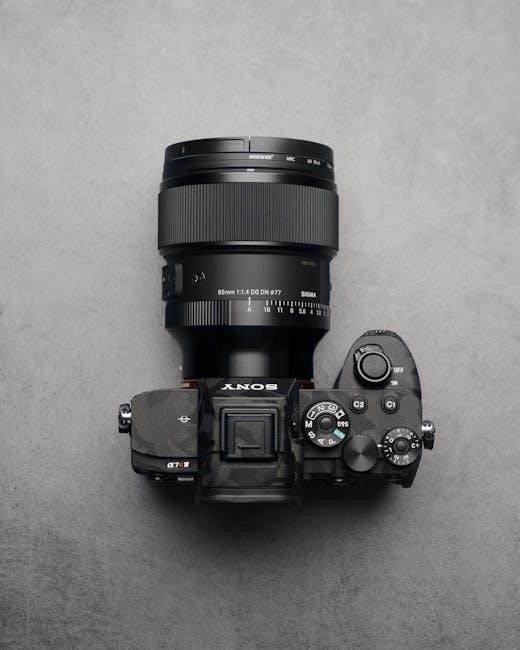Auxilium Christianorum Prayers PDF: An Overview
The Auxilium Christianorum devotion centers around seeking the Blessed Virgin Mary’s intercession for protection against demonic influence and spiritual warfare. A PDF guide to these prayers offers convenient access to daily recitations. These prayers are designed to provide trust in God.

What is Auxilium Christianorum?
Auxilium Christianorum, meaning “Help of Christians,” is a Catholic devotion honoring the Virgin Mary as a protector of Christianity. It is an association established to protect and support daily struggles against evil. Its origins trace back to historical events where Marian intervention was credited with military victories.
Members bear in mind their role as Church members waging war against demonic forces. The association focuses on prayer for priests, so their apostolate in driving out demons is efficacious. It also provides prayers for members, their families, and friends to protect them from demonic influence.
The devotion encourages a serious approach to spiritual warfare. It is recommended to be in a state of grace before praying; Daily prayers are offered for the members, focusing on seeking protection from the vengeance of the evil one.
The core aims involve offering prayers, supplications, sufferings, and good works to God through Mary. This is done so that the demons influencing the members are rendered ineffective. The devotion emphasizes Mary’s role in crushing the serpent’s head and providing guidance.

The Purpose of Auxilium Christianorum Prayers
The primary purpose of Auxilium Christianorum prayers is to seek protection and assistance from demonic influence and spiritual warfare through the intercession of the Blessed Virgin Mary. These prayers aim to aid priests in their exorcism ministry, ensuring its effectiveness. The prayers are also to protect members, their families, and friends from adverse demonic effects.
By engaging in these prayers, individuals intend to fortify their spiritual defenses. The prayers help one to wage war against the demonic forces. They are an acknowledgement of the reality of the Church’s struggle in this world.
These prayers are offered with the intention of purifying and sanctifying them. The prayers are presented to Jesus as a perfect offering through Mary. It is believed that these prayers weaken demonic influence on members of the Auxilium Christianorum.
The prayers cultivate trust in God as protector, providing comfort and strength. Regular recitation of these prayers fosters a habit of reliance on divine assistance. Through Mary’s guidance, the prayers seek to keep souls on the path of virtue and prevent them from succumbing to weakness.
Key Aims of the Auxilium Christianorum Association
The association primarily aims to provide prayer support for priests. It aims to protect members, families, and friends from demonic influence. It recognizes the importance of spiritual warfare. The association is a practical tool against evil.
Providing Prayer for Priests
A core objective of the Auxilium Christianorum is dedicated prayer for priests. These prayers aim to support those associated with the Auxilium Christianorum. The support is to bolster the effectiveness of their work in combating demonic influence. This is especially relevant in their apostolate focused on driving out demons, ensuring their efforts are efficacious.
The association recognizes the unique spiritual battles faced by priests, particularly exorcists. Regular prayer offers a shield against the demonic forces. This constant prayer aims to amplify the priest’s ability to minister effectively. The combined spiritual strength derived from the association’s prayers is essential for those engaged in spiritual warfare.
It is an acknowledgement of the critical role priests play. It is a recognition of their vulnerability in combating evil. The Auxilium Christianorum provides essential spiritual backing. It provides a network of prayer warriors committed to their well-being. These prayers are a vital source of strength and protection.
The association ensures priests are not alone in their spiritual battles. The association provides a community of support and intercession, empowering them in their ministry.
Protection for Members and Their Families
Beyond supporting priests, the Auxilium Christianorum extends its protective prayers to its members, their families, and friends. This is a central aim of the association. Members and their loved ones are shielded from adverse effects linked to demonic forces. This commitment acknowledges the potential spiritual repercussions. It also recognizes the dangers associated with involvement in spiritual warfare.
Recognizing the reality of spiritual battles, the association provides prayers for protection. These prayers aim to safeguard individuals and their households. This ensures they remain untouched by negative influences. The prayers act as a barrier against spiritual harm. They reinforce faith and peace within the family.
The Auxilium Christianorum emphasizes the importance of collective spiritual well-being. It fosters a community where members support one another through prayer. This shared devotion strengthens their resolve. It ensures protection from the insidious effects of evil.
The protective prayers offered by the Auxilium Christianorum foster an environment of spiritual safety. It allows members to live their faith without fear. The association ensures that families are fortified against the darkness.

Father Chad Ripperger’s Recommendations
Father Chad Ripperger, a noted exorcist, offers specific recommendations regarding the Auxilium Christianorum prayers. He advises individuals to be in a state of grace before reciting these prayers. This condition enhances their efficacy. Maintaining spiritual purity is essential for those engaging in spiritual warfare. This preparation ensures a stronger connection with divine assistance.
He emphasizes the importance of personal holiness when invoking these prayers. This involves seeking reconciliation through Confession. It also requires striving to live a virtuous life. This spiritual readiness fortifies the individual. It also protects them against potential backlash from demonic forces.
Father Ripperger’s guidance underscores the seriousness of engaging in spiritual battles. It is not to be undertaken lightly. His recommendations serve as a reminder that spiritual warfare requires proper preparation and a commitment to living in accordance with God’s will.
By adhering to Father Ripperger’s advice, individuals can approach the Auxilium Christianorum prayers with confidence. They’ll be equipped with the spiritual armor necessary to effectively combat evil influences. This helps to promote healing and spiritual growth.

Essential Prayers within the Auxilium Christianorum
The Auxilium Christianorum includes a collection of essential prayers designed for spiritual protection and warfare. These prayers seek the intercession of the Blessed Virgin Mary, invoking her aid against demonic forces; Among these are specific prayers for priests. These prayers are designed to bolster their ministry of exorcism.
The daily rosary, preferably the Dolorous Mysteries, is a central component. It does not have to be specifically for the intentions of the Society to fulfill requirements. Additional key prayers include invocations to St. Michael the Archangel. These prayers are for protection and spiritual strength. Meditations are also encouraged for spiritual growth.
These prayers provide support and defense against evil influences. They reinforce members’ commitment to the Church. They also address the spiritual battles faced in daily life.
The essential prayers act as a shield; They are a weapon for those engaged in this devotion. They foster a deeper connection with God and Mary. They promote spiritual well-being.
The Importance of Spiritual Warfare
Spiritual warfare underscores the Auxilium Christianorum’s mission, highlighting the ongoing battle against demonic forces. The prayers within this devotion serve as essential tools. They aid in this constant struggle, emphasizing the reality of evil influences in the world.
Many Catholics may overlook their obligation to engage in spiritual combat, despite St. Paul’s teachings. The Auxilium Christianorum addresses this gap. It provides resources to wage war against these forces. It recognizes that the fight is constant and demands vigilance.
Members are reminded to remain aware of their role as Church members. They live in a world where evil is waxing. This awareness reinforces the need for prayer, supplication, and good works.
Spiritual warfare is not merely a symbolic concept. It is a real engagement. The battle is against forces seeking to influence or harm members. The prayers offer purification and sanctification. They present perfect offerings to God to combat these influences.
Availability of Prayers in Multiple Languages
The Auxilium Christianorum prayers boast accessibility across various linguistic communities, ensuring that a global audience can engage with this devotion. Recognizing the diverse backgrounds of its members, the prayers are available in numerous languages. These include English, Spanish, French, and Portuguese. Further translations extend to German, Polish, Dutch, Italian, and Latin.
This multilingual approach ensures that individuals can connect with the prayers in their native tongue, fostering deeper understanding and more meaningful engagement. The accessibility of the prayers in multiple languages reflects the universal call to spiritual warfare and the inclusive nature of the Auxilium Christianorum.
By offering prayers in a variety of languages, the association eliminates linguistic barriers. It allows more people to seek protection from demonic influence and strengthen their spiritual defenses. This commitment to inclusivity broadens the reach. It reinforces the message of hope and divine assistance.
The availability in different languages underscores the global significance. It emphasizes the importance of unity in prayer. It transcends cultural differences.
Daily Prayer Schedule for Lay Persons
For lay persons participating in the Auxilium Christianorum, a structured daily prayer schedule is recommended to foster consistent spiritual protection. The suggested times for prayer are 6:00 AM, 12:00 Noon, and 6:00 PM each day, providing a rhythm of devotion. The schedule commences with the invocation, “V/. Our help is in the name of the Lord. R/. Who made heaven and earth.”
Following this, prayers are offered to the Most Gracious Virgin Mary, seeking her protection from the evil one. These prayers are seen as offerings of supplications, sufferings, and good works to God through Mary’s intercession. This schedule integrates seamlessly into daily life. It provides regular opportunities to fortify oneself against demonic forces.
The schedule also includes the daily rosary, preferably the Dolorosary, although not necessarily for the Society’s specific intentions. It is followed by fifteen minutes of meditation and specific prayers for the Society. The repetition of these prayers at set times throughout the day helps create a habit. It strengthens one’s resolve. It fosters a deeper connection with God.
























